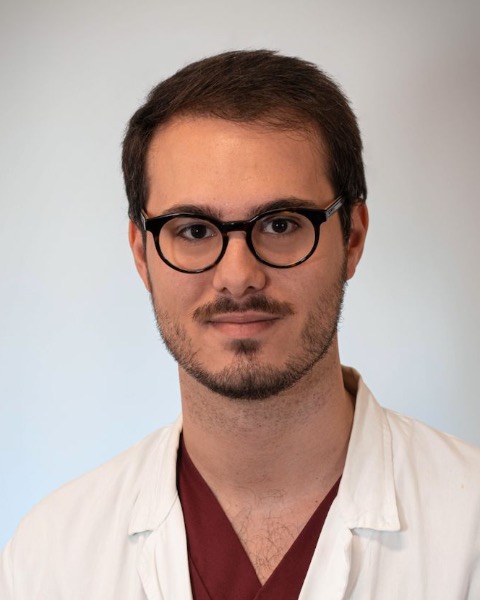Back
Introduction: Since their inception 3D virtual models have helped clinician in surgical indication and preoperative planning, as well as in intraoperative guidance. The added value of 3D models was particularly true in robot-assisted partial nephrectomy (RAPN) given the wide spectrum of possible tumor locations and anatomical variants. We aimed to examine the impact of 3D virtual models on surgical outcomes in a tertiary referral center.
Methods: We relied on 474 patients in our prospectively maintained renal cancer database treated with RAPN between 2009 and 2021. Patients harbouring multiple masses were excluded. The endpoints of the analyses were: 1) presence of positive surgical margins (PSM); 2) warm ischemia time (WIT) and 3) length of stay (LOS). Multivariable regressions examined the impact of the use of 3D virtual model on PSM, WIT and LOS. For all models, the adjustment for casemix included: age, sex, tumor size, tumor side, clinical T stage, PADUA score and estimated blood loss (EBL).
Results: Overall, median age was 64 years (interquartile range [IQR]: 55, 73). Median (IQR) tumor size and PADUA score were 3.1 (2.1, 4.5) cm and 8 (7, 10), whereas tumor side was more frequently right (54%). Median WIT was 13 minutes (IQR: 6, 19). OR console time and blood loss were 120 minutes (IQR: 90, 150) and 200 ml (IQR: 100-300), respectively. Median LOS was 3 days (IQR: 3, 5) and 7% of patients had PSM on final pathology. A 3D model was reconstructed for 84 (18%) patients. Patients with reconstructed 3D virtual models had more complex tumors (median PADUA score 9 vs. 8, p<0.05). No other statistically significant differences were recorded, although patients with available 3D models were older (66 vs. 64 years), less frequently male (63% vs. 71%), and exhibited longer WIT (14 vs. 13 minutes), shorter LOS (3 vs. 4 days) and lower PSM rate (3.6% vs 7.4%) (all p>0.05). On multivariable logistic regression models, 3D virtual model usage was an independent predictor of lower PSM rate (odds ratio [OR]: 0.27; p<0.05). Similarly, on multivariable Poisson regressions, 3D virtual model usage was an independent predictor of shorter WIT (OR 0.78; p<0.05) and shorter LOS (OR: 0.82; p<0.01).
Conclusions: Our findings suggest a potentially crucial role of 3D virtual reconstructions for candidates to RAPN for both surgical planning and intraoperative guidance. Indeed, the use of 3D virtual models led to an improvement of potentially both oncological (reduction in PSM) and functional outcomes (reduction in WIT). Further studies are required to confirm these findings at long-term follow-up. SOURCE OF
Funding: none
Moderated Poster Session
Session: MP58: Kidney Cancer: Localized: Surgical Therapy III
MP58-07: The impact of 3D models on surgical outcomes of RAPN: is CT scan becoming obsolete?
Sunday, April 30, 2023
9:30 AM – 11:30 AM CST
Location: S504

Luigi Nocera, MD
Vita-Salute San Raffaele University, San Raffaele Hospital
Poster Presenter(s)
Introduction: Since their inception 3D virtual models have helped clinician in surgical indication and preoperative planning, as well as in intraoperative guidance. The added value of 3D models was particularly true in robot-assisted partial nephrectomy (RAPN) given the wide spectrum of possible tumor locations and anatomical variants. We aimed to examine the impact of 3D virtual models on surgical outcomes in a tertiary referral center.
Methods: We relied on 474 patients in our prospectively maintained renal cancer database treated with RAPN between 2009 and 2021. Patients harbouring multiple masses were excluded. The endpoints of the analyses were: 1) presence of positive surgical margins (PSM); 2) warm ischemia time (WIT) and 3) length of stay (LOS). Multivariable regressions examined the impact of the use of 3D virtual model on PSM, WIT and LOS. For all models, the adjustment for casemix included: age, sex, tumor size, tumor side, clinical T stage, PADUA score and estimated blood loss (EBL).
Results: Overall, median age was 64 years (interquartile range [IQR]: 55, 73). Median (IQR) tumor size and PADUA score were 3.1 (2.1, 4.5) cm and 8 (7, 10), whereas tumor side was more frequently right (54%). Median WIT was 13 minutes (IQR: 6, 19). OR console time and blood loss were 120 minutes (IQR: 90, 150) and 200 ml (IQR: 100-300), respectively. Median LOS was 3 days (IQR: 3, 5) and 7% of patients had PSM on final pathology. A 3D model was reconstructed for 84 (18%) patients. Patients with reconstructed 3D virtual models had more complex tumors (median PADUA score 9 vs. 8, p<0.05). No other statistically significant differences were recorded, although patients with available 3D models were older (66 vs. 64 years), less frequently male (63% vs. 71%), and exhibited longer WIT (14 vs. 13 minutes), shorter LOS (3 vs. 4 days) and lower PSM rate (3.6% vs 7.4%) (all p>0.05). On multivariable logistic regression models, 3D virtual model usage was an independent predictor of lower PSM rate (odds ratio [OR]: 0.27; p<0.05). Similarly, on multivariable Poisson regressions, 3D virtual model usage was an independent predictor of shorter WIT (OR 0.78; p<0.05) and shorter LOS (OR: 0.82; p<0.01).
Conclusions: Our findings suggest a potentially crucial role of 3D virtual reconstructions for candidates to RAPN for both surgical planning and intraoperative guidance. Indeed, the use of 3D virtual models led to an improvement of potentially both oncological (reduction in PSM) and functional outcomes (reduction in WIT). Further studies are required to confirm these findings at long-term follow-up. SOURCE OF
Funding: none
